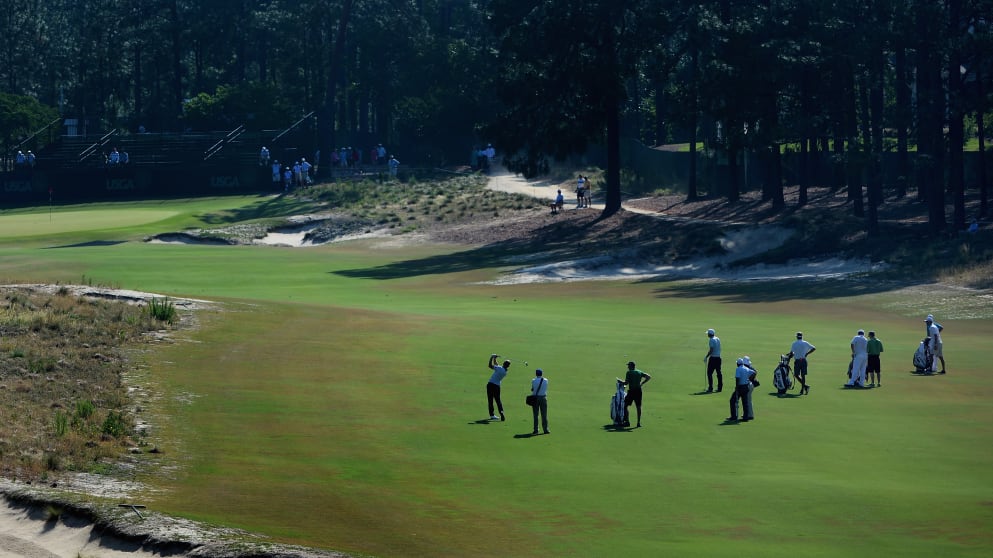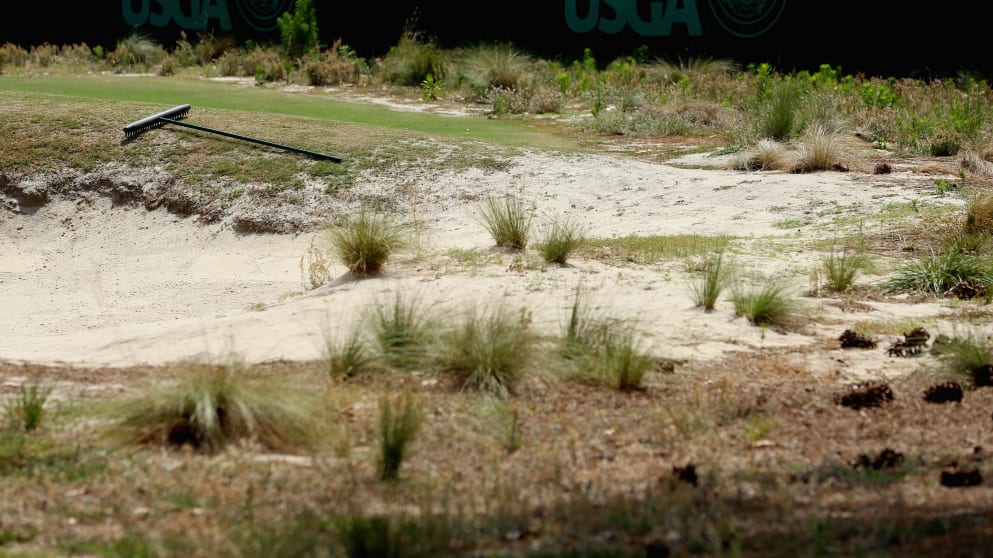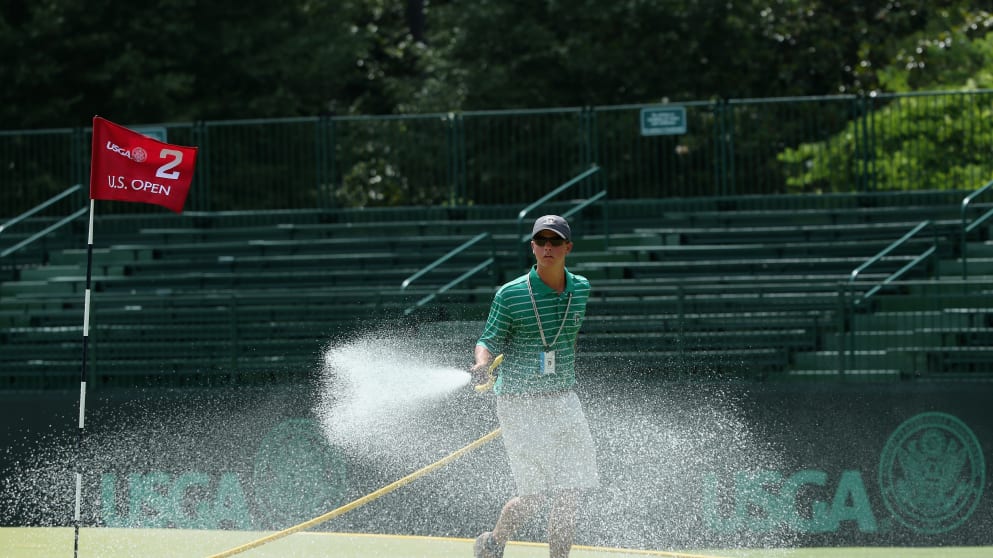By Will Pearson, europeantour.com
at Pinehurst

Ahead of the 114th US Open Championship, europeantour.com explores the newly-remodelled Pinehurst No. 2 with the help of World Number Two Henrik Stenson and defending champion Justin Rose…
Lodged firmly amongst the pantheon of classic American golf courses alongside the likes of Augusta National and Pebble Beach, Pinehurst Resort’s renowned No. 2 course will this week host the United States’ national Open for the third time after Payne Stewart and Michael Campbell triumphed when the championship was last contested here in 1999 and 2005 respectively.
Located in the sandhills of North Carolina, Pinehurst is a sprawling, verdant paradise which up until fairly recently, when it was overtaken by Mission Hills in China, held the Guinness World Record for the biggest golf resort on earth.
At eight golf courses and 144 supremely manicured holes, this gargantuan set-up is steeped in history, having also hosted the 1936 US PGA Championship and The 1951 Ryder Cup, but it is Donald Ross’ revered No. 2 course which holds the torch as Pinehurst’s masterpiece.
Beginnings
Founded by Boston soda fountain magnate James Walker Tufts, who bought the 5,500 acre site for approximately $1.25 per acre in 1895, the No. 2 course opened in 1907 after the initial nine holes were completed in 1901.
Scotland’s Ross, who was born in Dornoch but spent much of his adult life in the States, served his apprenticeship with Old Tom Morris in St Andrews before crossing the Atlantic, so he was well versed in high-pedigree golfing layouts from the outset.
Ross would fine-tune the course a number times before his death in 1948, most notably in the build-up to the 1936 US PGA, an event which solidified Pinehurst No. 2’s reputation as one of the world’s foremost layouts.
‘A Restoration’
There was a feeling, however, when the USGA announced it would be staging the 2014 US Open at Pinehurst, that the No. 2 course had grown a little tired. Some felt Ross’ original aesthetic design and strategic architecture had been lost beneath acres of thick Bermuda grass rough.
And so North Carolina native Bill Coore and two-time Major winner Ben Crenshaw were commissioned to restore the old course to its former self.
After many a studious hour pouring over World War II era aerial photographs of Pinehurst, back came the sweeping sandscapes studded with wiry grass outcrops meaning – for the first time in recent memory – this old championship will be played without the typical US Open-thick rough.
“If you miss the fairway here it’s less of a debate over whether you use a gap wedge of pitching wedge to get back in play than in normal US Opens,” says 2013 European Number One Stenson. “If you go in the waste area you will probably have some sort of a shot eight or nine times out of ten, so you can play a little bit more aggressively off the tee perhaps, but sticking to the fairways and greens is never going to hurt.
“But if you end up straight up against one of those wiry grass patches, it might be a case of chipping it out so you don’t get any injuries. Most of the time you can bump something up close to the green, which is different from most US Opens.”

Crowned Greens
Pinehurst’s elevated ‘crowned’ greens are one of its defining characteristics and were left relatively untouched during the course renovations.
“Solid iron play and hitting a lot of greens is going to be the key this week,” Stenson continues. “The boys who hit a lot of greens will do well, because chipping around the greens is difficult. They are very undulating and it’s going to be pretty tough.
“You have to have a conservative game plan around here and go for the centre of the greens. They might not always look that small, but given the front, back and sides all slope away usually, you might only have half the size of the usual target. And with the weather this warm they will be firm, too.”
Rose adds: “It's a little bit like Augusta in that sense in that you're playing to zones, rather than just going at the pins or trying to hit greens. So precision iron play and being able to control the ball once it lands is important to me.”

A Lengthy Challenge
Pinehurst No. 2 will this week be set up at 7,562 yards and will play to a par of 35-35–70. For the 1999 US Open, the layout was a par 70 and played at 7,175 yards while for the 2005 edition, the No. 2 course was 7,214 yards with a par of 70.
At its 2014 length of 7,562 yards, Pinehurst No. 2 will be the second longest course in US Open Championship history, only surpassed in size by a brutal Torrey Pines layout in 2008, when the California venue came in at a staggering 7,643 yards.
Pinehurst will also set some new records in 2014 for having the two longest par fours in US Open history. The fourth and 16th holes of the No. 2 course will play at 529 and 528 yards, respectively. The previous longest par four in the storied history of the championship was the seventh hole at Bethpage State Park (Black Course) in 2009.
“I personally don't think there's a premium on length because of the way the fairways are running,” Rose reflects, though. “You can chase lines out there about 270 yards and, for me, everybody in the field is going to be able to hit it 270 to 290 given the roll.
“So I don't think the size of the course is an issue. The longer hitters are going to have the ability to get the ball coming into the greens softly from the same areas that most guys will be laying up to. So the guy who can hit a high soft iron shot will probably have a big advantage.”





